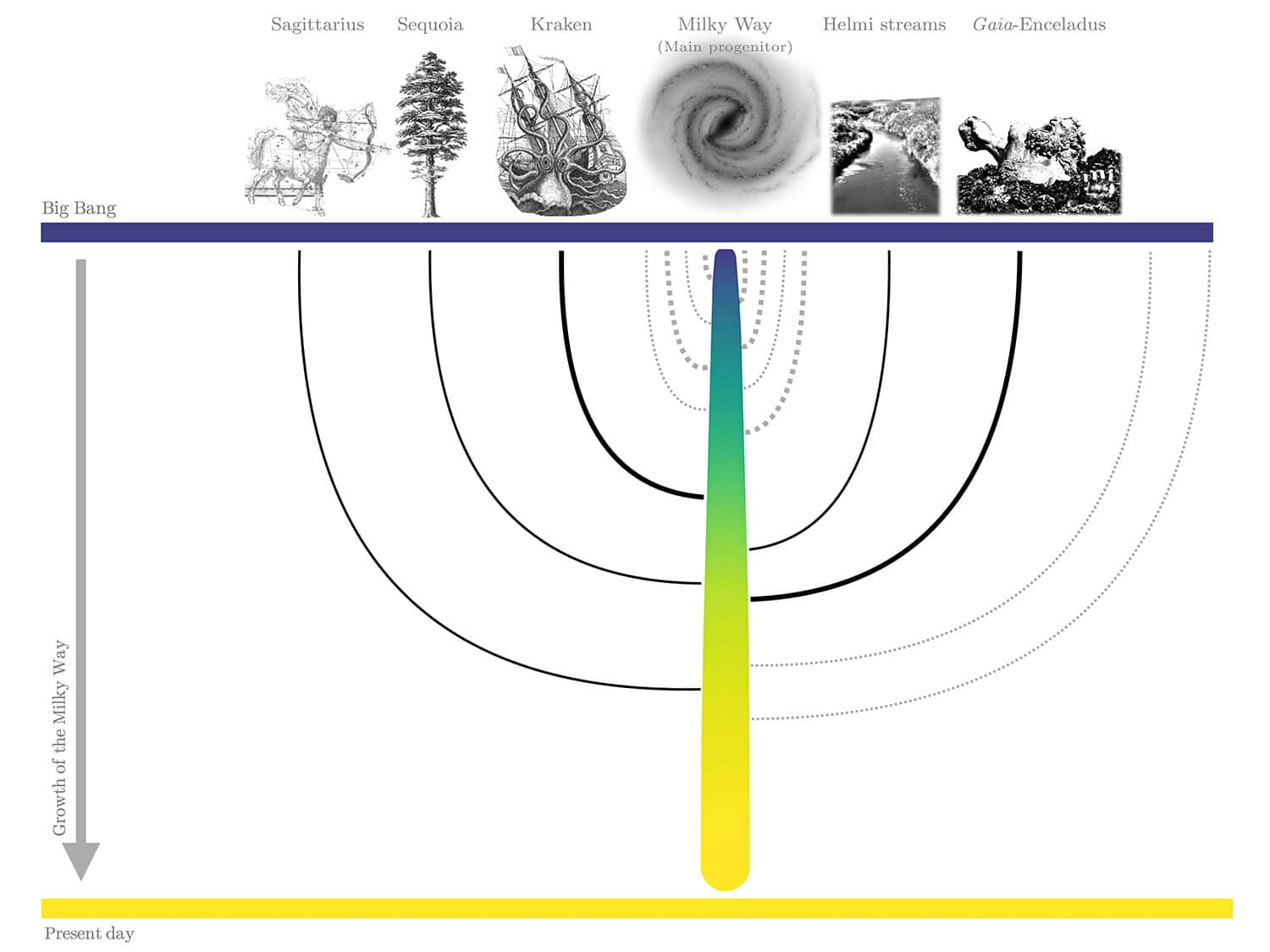
[ad_1]
Globular clusters (GCs) formed when the Milky Way went through a phase of rapid assembly. The Milky Way is home to over 150 of these clusters. Most of these clusters formed in the smaller galaxies that merged to form the galaxy we live in today.
For decades, the ancient eras of globular clusters have been considered “fossils” to reconstruct the earliest stories of galaxy assembly. However, it is only with the latest models and observations that this promise has become possible.
An international team of researchers led by Dr. Diederik Kruijssen at the Center for Astronomy at the University of Heidelberg (ZAH) and Dr. Joel Pfeffer at John Moores University in Liverpool has now succeeded in inferring the merger of the Milky Way. They successfully reconstructed the first complete family tree of our natal galaxy by analyzing the properties of globular clusters orbiting the Milky Way with artificial intelligence.
Scientists achieved this using newly developed computer simulations of the formation of Milky Way-like galaxies.
Called E-MOSAICS, the simulations include a comprehensive model for the formation, evolution and destruction of globular clusters.
In the simulations, the researchers were able to relate the age, chemical compositions and orbital movements of globular clusters to the properties of the progenitor galaxies in which they formed, more than 10 billion years ago. By applying these insights to groups of globular clusters in the Milky Way, they determined the number of stars contained in these progenitor galaxies. They even got an idea when they merged into the Milky Way.
Dr Diederik Kruijssen of the Center for Astronomy of the University of Heidelberg (ZAH) said: “The main challenge in linking the properties of globular clusters to the merging history of their host galaxy has always been that the assembly of the galaxy is an extremely messy process, during which the orbits of globular clusters are completely reshuffled.”
“To make sense of the complex system that remains today, we therefore decided to use artificial intelligence. We trained an artificial neural network on E-MOSAICS simulations to relate the properties of globular clusters to the merger history of the host galaxy. We have tested the algorithm tens of thousands of times in simulations. We were amazed at how accurately it was able to reconstruct the merger histories of simulated galaxies using only their globular cluster populations.
Having obtained these results, the scientists decided to determine the history of the merger of the Milky Way. To do this, they used groups of globular clusters that are thought to have formed in the same parent galaxy based on their orbital motion.
By applying the neural network to these groups of globular clusters, scientists could predict the stellar masses and melting times of the progenitor galaxies with high precision. It also revealed a previously unknown collision between the Milky Way and an enigmatic galaxy, called the “Kraken”.
Kruijssen said, “The collision with Kraken must have been the most significant merger the Milky Way has ever experienced. Previously, a collision with the Gaia-Enceladus-Sausage galaxy, which occurred about 9 billion years ago, was thought to be the largest collision event. However, the merger with Kraken happened 11 billion years ago, when the Milky Way was four times less massive. Consequently, the collision with Kraken must have really transformed the appearance of the Milky Way at that time. ”
Throughout its history, the Milky Way has cannibalized about five galaxies with more than 100 million stars and about fifteen with at least 10 million stars. The most massive progenitor galaxies collided with the Milky Way between 6 and 11 billion years ago.
According to the scientists, the study could help spur future studies looking for the remains of these progenitor galaxies.
Journal reference:
- JM Diederik Kruijssen et al. Kraken Reveals: The Milky Way Fusion Story Reconstructed with E-MOSAICS Simulations, Monthly Notice of the Royal Astronomical Society (2020). DOI: 10.1093 / mnras / staa2452
[ad_2]
Source link